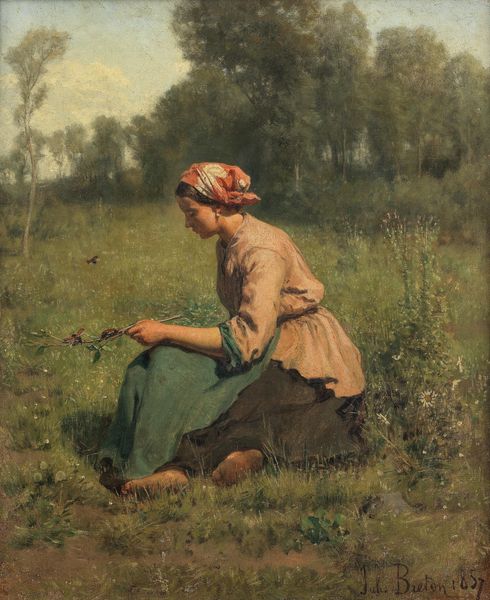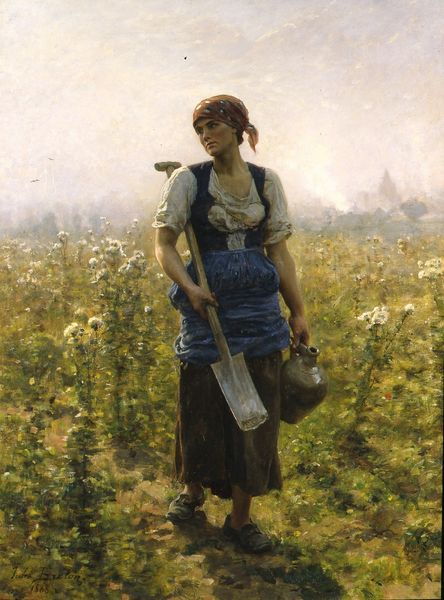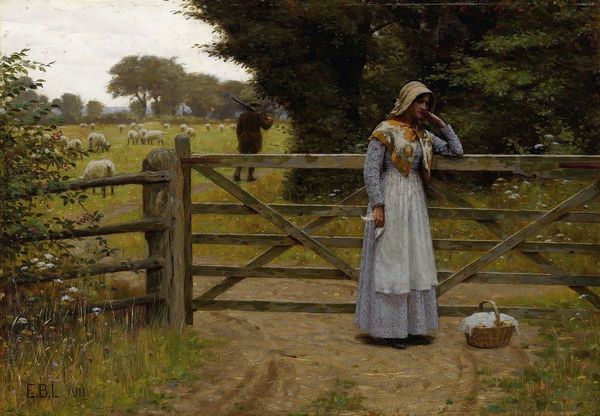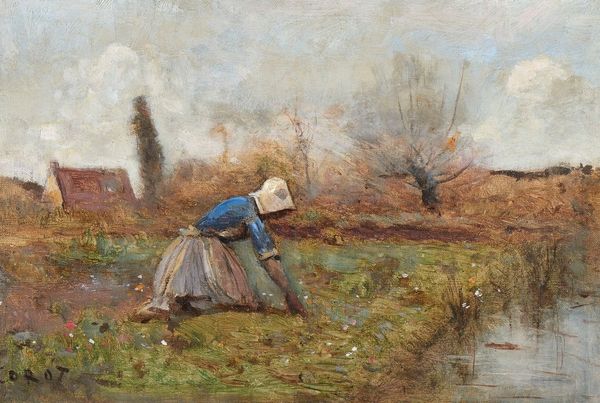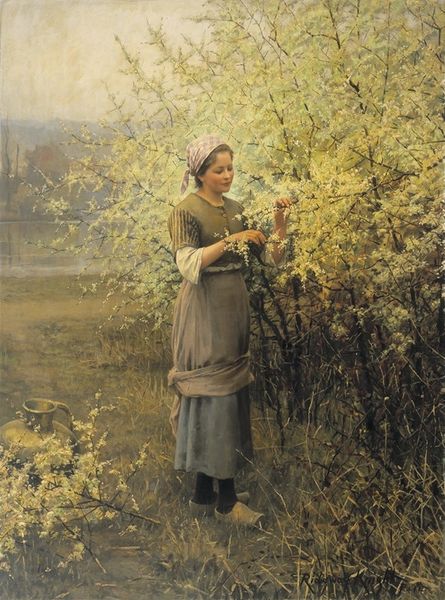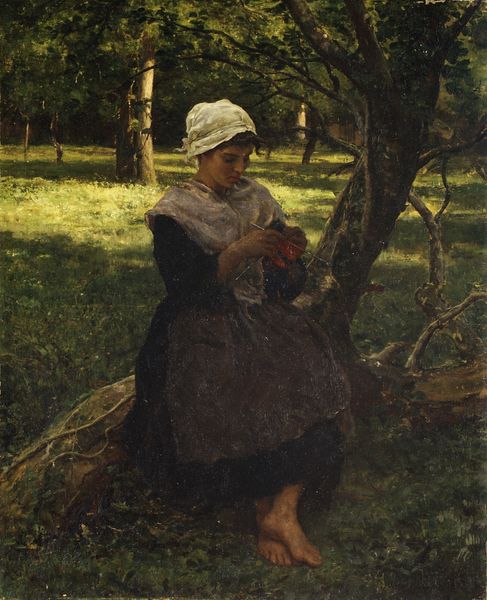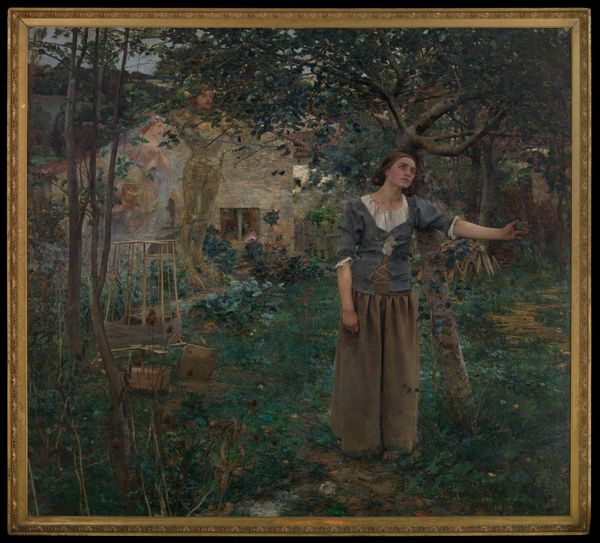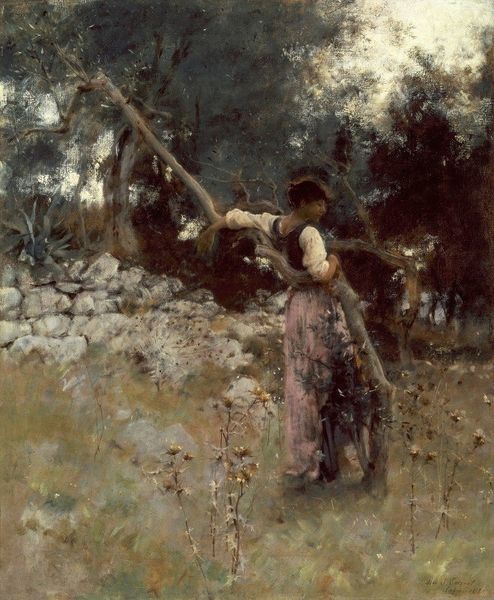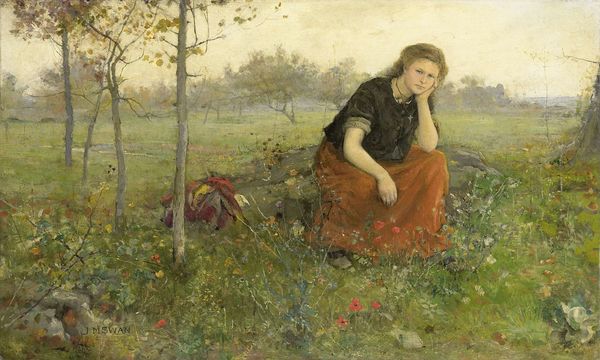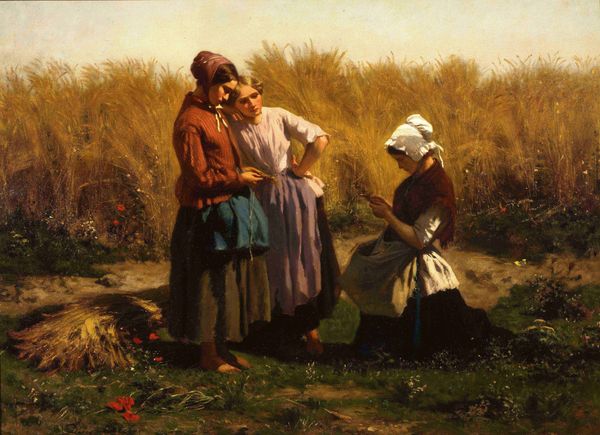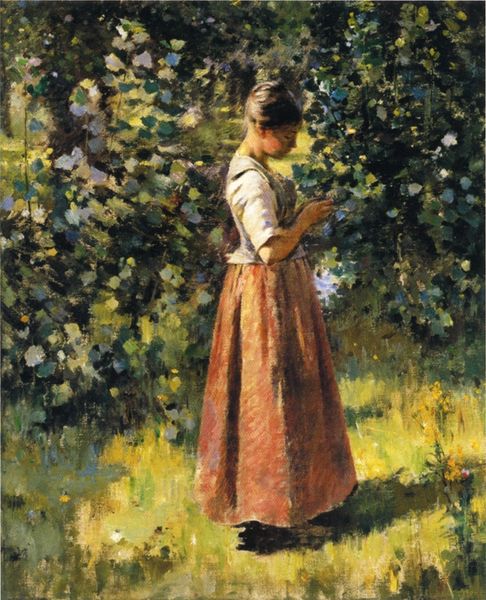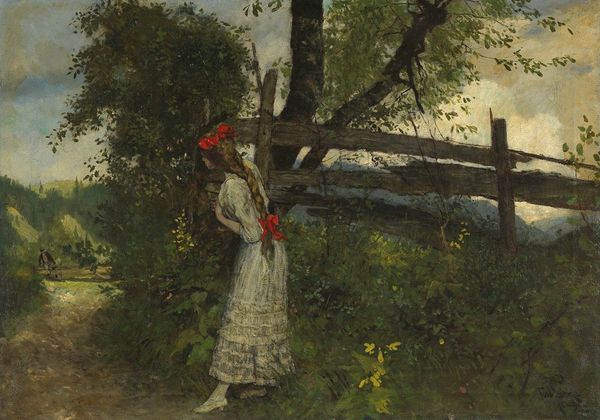
Dimensions: support: 718 x 578 mm
Copyright: CC-BY-NC-ND 4.0 DEED, Photo: Tate
Curator: William Stott of Oldham’s "Girl in a Meadow" presents us with a study in subtle tonal variations. The dimensions are intimate, roughly 718 by 578 millimeters. Editor: It immediately evokes a sense of quiet melancholy, doesn't it? The subdued palette and the girl's averted gaze create an atmosphere of introspection. Curator: Absolutely. Note how Stott employs a limited range of greens and blues, building form through careful gradations of light rather than stark contrasts. The composition leads the eye through a series of carefully arranged planes. Editor: And how might this composition speak to the social context of the late 19th century? The girl, perhaps a rural worker, is visually confined by the fence, suggesting limitations placed upon women of the era. Curator: An intriguing interpretation, but let us not overlook the formal elements: the delicate brushwork, the use of light to soften the edges, creating an almost dreamlike quality. Editor: Perhaps that dreamlike quality serves to underscore the unrealized potential, the aspirations stifled by societal constraints, don't you think? Curator: One could argue that the artist simply sought to capture a fleeting moment of beauty, using formal strategies to evoke mood. Editor: Possibly. Still, I find it hard to divorce the image from its historical reality. It leaves me pondering what the girl is thinking. Curator: Indeed, and what we've taken away from examining Stott's formal choices.
Comments
tatebritain 7 months ago
⋮
http://www.tate.org.uk/art/artworks/stott-of-oldham-girl-in-a-meadow-n05031
Join the conversation
Join millions of artists and users on Artera today and experience the ultimate creative platform.
tatebritain 7 months ago
⋮
William Stott studied in Paris under the French painter, Jean-Léon Gérôme. He also exhibited at the Paris Salon, where he was awarded a medal in 1882. This picture is an exercise in the type of rural naturalism practised by French artists like Jules Bastien-Lepage, who were in turn influenced by the group of painters working in the Cornish fishing village of Newlyn in England. Stott devotes considerable attention to the arrangement of the closely observed flowers and vegetation. This kind of detail appealed to more conservative elements of the British art world, such as the Royal Academy, where Stott frequently exhibited. Gallery label, August 2004
